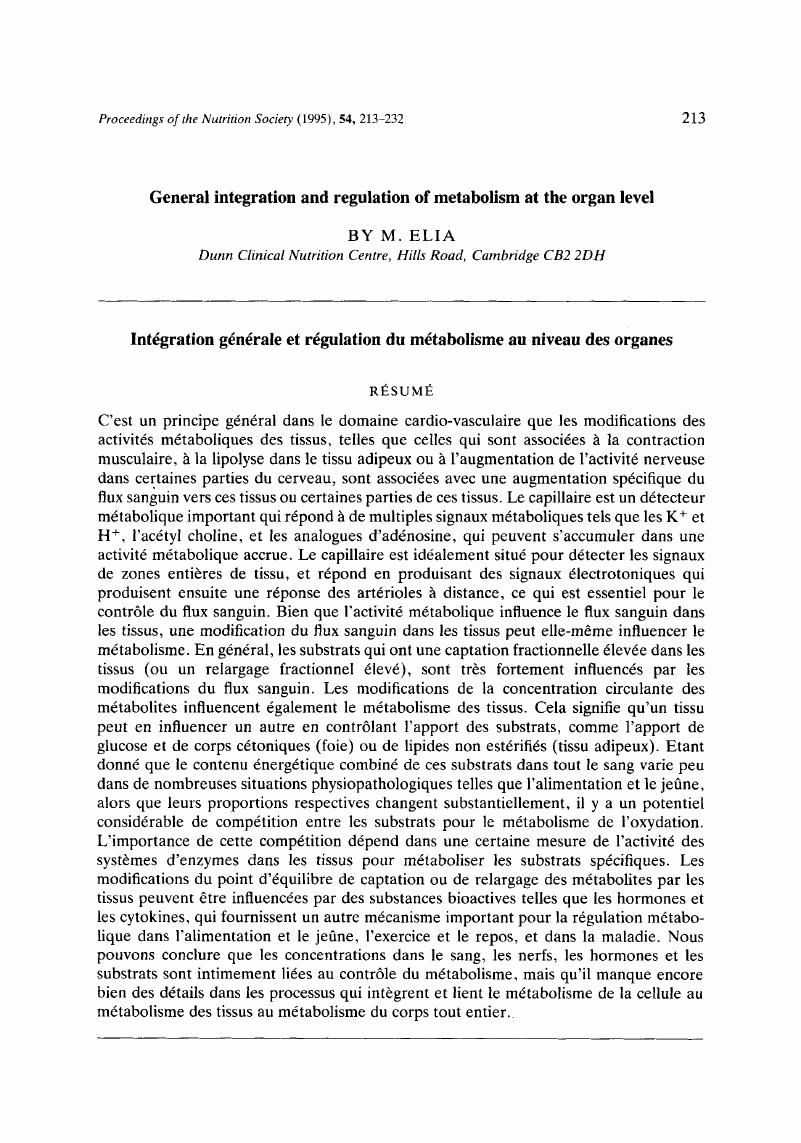Crossref Citations
This article has been cited by the following publications. This list is generated based on data provided by Crossref.
Elia, M.
1996.
Recent Developments in Infant Nutrition.
p.
318.
Samra, J. S.
Simpson, E. J.
Clark, M. L.
Forster, C. D.
Humphreys, S. M.
Macdonald, I. A.
and
Frayn, K. N.
1996.
Effects of epinephrine infusion on adipose tissue: interactions between blood flow and lipid metabolism.
American Journal of Physiology-Endocrinology and Metabolism,
Vol. 271,
Issue. 5,
p.
E834.
Löhrke, B.
Derno, M.
Matthes, Heide-Dörte
Scholze, H.
and
Jentsch, W.
1997.
Involvement of α2-adrenergic activities in thermogenic responses to feeding, feeding level, and ambient temperature.
Zeitschrift für Ernährungswissenschaft,
Vol. 36,
Issue. 4,
p.
290.
Frayn, K.N.
1997.
Integration of substrate flow in vivo: some insights intometabolic control.
Clinical Nutrition,
Vol. 16,
Issue. 6,
p.
277.
García-Arumí, E.
Quiles, M.
López-Hellín, J.
Andreu, A. L.
Arbós, M. A.
and
Schwartz, S.
1997.
Effect of Starvation on Organ Blood Flow in the Senescent Rat.
Archives of Physiology and Biochemistry,
Vol. 105,
Issue. 4,
p.
337.
Hocquette, J.F
Ortigues-Marty, I
Pethick, D
Herpin, P
and
Fernandez, X
1998.
Nutritional and hormonal regulation of energy metabolism in skeletal muscles of meat-producing animals.
Livestock Production Science,
Vol. 56,
Issue. 2,
p.
115.
Löhrke, B.
Derno, M.
Matthes, Heide‐Dörte
and
Jentsch, W.
1998.
Cellular aspects of the regulation of metabolic rate.
Archiv für Tierernaehrung,
Vol. 51,
Issue. 2-3,
p.
199.
Flatt, J. P.
1999.
Metabolism and Artificial Nutrition in the Critically Ill.
p.
29.
Horowitz, Jeffrey F.
and
Klein, Samuel
2000.
Whole body and abdominal lipolytic sensitivity to epinephrine is suppressed in upper body obese women.
American Journal of Physiology-Endocrinology and Metabolism,
Vol. 278,
Issue. 6,
p.
E1144.
Nelson, David L.
and
Cox, Michael M.
2001.
Lehninger Biochemie.
p.
941.
Flatt, Jean‐Pierre
2001.
Macronutrient Composition and Food Selection.
Obesity Research,
Vol. 9,
Issue. S11,
Fischman, Alan J.
Hsu, Hongbing
Carter, Edward A.
Yu, Yong M.
Tompkins, Ronald G.
Guerrero, J. Luis
Young, Vernon R.
and
Alpert, Nathaniel M.
2002.
Regional measurement of canine skeletal muscle blood flow by positron emission tomography with H2 15O.
Journal of Applied Physiology,
Vol. 92,
Issue. 4,
p.
1709.
Quadan, Farouk Al
and
., Bilal Altrabsheh
2006.
Simulation of Directions for a Reversible Enzyme Reaction by Using LabVIEW Graphical Programming Language.
Pakistan Journal of Biological Sciences,
Vol. 9,
Issue. 3,
p.
409.
Nelson, David L.
and
Cox, Michael M.
2011.
Lehninger Biochemie.
p.
1187.
Sun, Zhengpeng
Wang, Xuan
Shi, Chen
Yu, Tao
Xu, Weichen
Ji, Xinyu
Su, Ke
Yan, Hua
Shan, Yiwen
Xie, Tong
Xu, Jianya
Zhao, Xia
and
Shan, Jinjun
2025.
TREM2 modulates lipid metabolism to alleviate airway inflammation in asthma: A potential therapeutic target.
International Journal of Biological Macromolecules,
Vol. 308,
Issue. ,
p.
142306.



